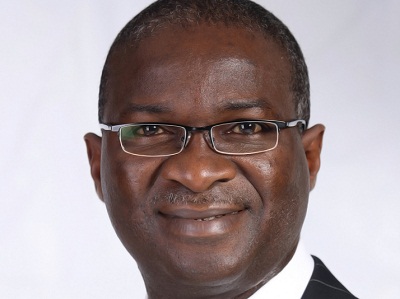General News
SMS and CSC Effective Mobile Marketing Tools

Technology continues to improve the way mankind does business in the 21st century and one of the best tools that have enhanced our living standards is mobile device which continues to astound even the innovators to push beyond limits
.
Before the turn of the century, analogue fixed wired telephone ruled but all that seem gone with the advent of digital mobile phone. Now, other mobile devices like the android, iPhone and tablet makes the famed George Orwells’ 1984 stone age.
The prediction earlier this year according to the Cisco’s ‘visual networking index’ on global mobile data traffic forecast is that the number of connected mobile devices will exceed total human population.
Over the past two years, connected global mobile data continue to double in growth. In 2011 for example, the traffic grew above Cisco’s prediction of 131 per cent – it grew at 133 per cent. “In 2011, mobile data traffic was 8 times the size of the entire global Internet in 2000 (597 petabytes vs. 75 petabytes).”
By 2016, we are told there will be about 1.4 mobile devices per capita, with over 10 billion connected mobile devices worldwide. The world population is projected to reach 7.3 billion by that year.
“By 2012, over 100 million smartphone users will be using over 1 gigabytes-per-month of data. And by 2016, the monthly global smartphone data traffic will pass 10 exabytes-per-months, with the average smartphone generating 2.6 gigabytes-per-month, a 17-fold increase from 2011’s average.”
Businesses find these figures quite attractive bate to invest in new line of operation. In North America, where connectivity is significantly high compared to emerging markets as in Africa, companies and organization now find the mobile platform as medium to reach out to potential and existing clients.
“Specifically, SMS is the most effective channel for marketers because of its simplicity, adoption (or) familiarity, and unbiased reach.
Virtually all phones are SMS capable, which means the channel can reach five billion subscribers worldwide.
The International Association for the Wireless Telecommunications Industry (CTIA) reported U.S. annualized yearly text messaging at 2.12 trillion in June 2011, indicating a huge opportunity for marketers.
And, according to Nielsen Mobile, the average consumer sends 600 messages per month compared to using less than 200 voice minutes,” according to a neustar report recently released.
Interestingly, unlike in Africa where the majority of the populations rely on mobile phones to transact businesses and engage in other forms of social-activities, only about 31.6 per cent of the American households are wireless-only (suggesting that they rely solely on their mobile phones as opposed to fixed-landlines).
In over 95 per cent of post-paid mobile contracts, text messages is built into the contract with about 90 per cent of SMS opened and read, this contrast sharply to less than 40 per cent of all email solicitations.
In essence, text message or SMS with its universal accessibility and usage, combined with the ability to provide information in real-time and creates opportunities is making it increasingly more attractive medium of communication than the email options.
More and more companies in the most advanced economies are relying on a ‘common shot code’ mobile marketing platform to “deliver personal, immediate and actionable contents to a target audience.”
“A Common Short Code (CSC) is a 5 or 6 digit carrier-approved number that mobile phone subscribers use to send SMS messages in order to receive information, promotions, alerts and branded content directly to their device.”
Radio stations operating in the frequency modulation (FM), band in Nigeria find the CSC attractive to interact with their target audience – this is affected through a binding contract between the station(s) and a mobile operator, with revenue sharing formula built into the contract. The CSC gateway proves a mutual benefit to both consumers and brands in establishing a two-way communication channel.
“The CSC gateway enables wireless subscribers to access mobile applications and participate in voting and polling, customer feedback, database enrollment, news and offer alerts, contests, surveys, chat, games, direct marketing and mobile commerce. Short code campaigns are rapidly growing in popularity because of their inherent simplicity, ubiquitous outreach, societal trendiness, and perpetual accessibility,” said neustar.
Radio listeners turn to SMS and the CSC platforms to reach their preferred stations during social protests to vent their frustrations over the airwaves. This is even more attractive because of the low broadband penetration in Nigeria and the lack of access to Internet facility to send email or interact on social media platforms. Its cost effectiveness is also an added attraction that pulls listeners to use this medium.
Increasingly, as in the most advanced economies, more businesses would find this medium more profitable to reach their customers for a more cheaper, faster and sure advertising platform.
The result of a recent survey by U.S based firm showed that CSC campaign generated 325 percent more entries than the Web-based call-to-action. While it only ran in 25 percent of the adverts, the short code campaign generated to 52 percent of the total entries. The results demonstrate how short code campaigns make it easy for the consumer to respond to the calls to action while it is still top of mind.
General News
NCAA Orders Airlines to Enforce $10,000 Currency Declaration Rule

The Nigeria Civil Aviation Authority has ordered all international airlines flying into Nigeria to enforce the $10,000 currency declaration rule.

The authority said the rule is required for passengers to declare cash or negotiable instruments above the limit, as part of efforts to strengthen anti-money laundering compliance.
According to the NCAA, the directive, referenced as NCAA/CPD/ABV/298, dated 24 April 2025 seeks to address gaps in the enforcement of existing currency declaration obligations for inbound passengers.
This was announced in a statement issued by the Director of Public Affairs and Consumer Protection, Michael Achimugu, via his official X account on Tuesday.
“International carriers must take two key actions, which include “Make inflight or pre-landing announcements informing passengers of their legal obligation to declare any currency or Bearer Negotiable Instruments exceeding $10,000 USD or its equivalent upon arrival in Nigeria.
“Distribute currency declaration forms onboard for passengers to complete before landing. The NCAA has received reports indicating that some airlines are yet to comply with this directive”, the statement read.
The NCAA said these requirements are consistent with international best practices and are vital to preventing the illegal movement of large sums of money across borders.
The Authority warned that full cooperation from international airlines is essential, saying, “Please note that the cooperation of all international airlines operating in Nigeria is critical to supporting the country’s efforts to align with global financial standards.”
Accordingly, the authority emphasised that full implementation of this directive, particularly as it concerns inbound passenger declarations, is of utmost importance.
“Compliance will be closely monitored, and non-compliant airlines will face appropriate sanctions,” it added.
General News
Appeal Court Nullifies Registration of ‘KPMG Professional Services’

The court of appeal in Lagos has asked the Corporate Affairs Commission (CAC) to revoke the certificate of registration of “KPMG Professional Services”.

In a unanimous decision delivered on Thursday, the appellant court granted the reliefs sought by KPMG Nigeria against CAC and KPMG Professional Services.
The judgment was read by Abdullahi Mahmud Bayero, the judge.
The two other judges are Abimbola Obaseki-Adejumo and A.M. Talba.
In 2002, KPMG Professional Services was registered as a company with CAC despite the existence of KPMG Nigeria, comprising its audit, tax, and consulting arms.
The KPMG Nigeria has long been registered in Nigeria before 2002.
KPMG Audit was registered in 1969, KPMG Tax Consultants in 1990, and KPMG Consulting in 1969.
Displeased with the registration of KPMG Professional Services, KPMG Nigeria approached the federal high court.
The consulting firm had argued that the name “KPMG Professional Services” was deceptively similar to its long-established identity.
In 2005, the lower court dismissed KPMG Nigeria’s case, citing an alleged merger between KPMG Nigeria and Akintola Williams Deloitte as reason the company could no longer assert rights to the name.
The lower upheld the second respondent’s (KPMG Professional Services) counterclaim and ordered that KPMG Nigeria’s name be struck off the CAC register.
The lower court had premised its decision on newspaper articles stating that KPMG Nigeria reportedly merged with Akintola Williams Deloitte.
Delivering the judgment, Bayero ruled that the lower court erred by relying on newspaper articles to ascertain that KPMG Nigeria allegedly merged with another company.
The judge said the documents showing the alleged merger were not presented before the lower court, and the form of the alleged merger could not have been known.
“In any event, the only branch of KPMG, if any, that entered into a merger with Akintola Williams as stated in the newspaper articles 18, is KPMG Audit,” the judge ruled.
“The other spheres were totally unaffected. It would therefore be wrong to state that the merger (which has not been shown to this Court) of KPMG Audit with Akintola Williams means all the other areas of business, including KPMG Consulting and KPMG Tax Consultants, also ceased to exist.
“Even if the Appellants (KPMG Nigeria) had ceased to do business as the Court seemed to have held, the 2nd Respondents (KPMG Professional Services) should not have been carrying on business until the Appellant’s certificate of registration is withdrawn or set aside.
“They cannot use the name until the Appellant’s certification of registration is withdrawn or set aside. They cannot use the name until the name is removed from the 1st Respondent’s (CAC) Register of Names.
“The 1st Respondents can only assign the name to the 2nd Respondents after first taking it away from the Appellants.”
The court ruled that CAC erred by registering KPMG Professional Services despite the existence of a business name, which is already registered.
The judge reversed the earlier ruling of the lower court and reaffirmed the primacy of statutory protection for existing business names under Nigerian corporate law.
General News
Air Peace Launches Abuja–London Heathrow, Gatwick flights October 26

Air Peace has announced the launch of direct flights from Abuja to London Heathrow and Gatwick airports, with operations scheduled to begin on October 26, 2025.

The airline said in a statement on Sunday that round-trip fares for the Abuja–London service will start from N1m, making it the first Nigerian carrier to offer direct connections from the capital to both of London’s major international airports. This was contained in a press release issued on Sunday by the airline’s spokesperson, Efe Osifo-Whiskey.
“Direct international flight services from Abuja to both London Heathrow and London Gatwick Airports, effective October 26, 2025.
“Air Peace becomes the first Nigerian carrier to offer direct services from Abuja to both of London’s major international airports, further solidifying its role as a leader in regional and intercontinental aviation.
“Travellers originating from any of Air Peace’s domestic destinations across Nigeria can now book through fares via Abuja to either Heathrow or Gatwick using a single ticket, eliminating the need for multiple bookings or baggage re-checks,” the statement read.
Similarly, the new route opens convenient access for inbound passengers from the UK to cities across Nigeria.
“Travellers from London can access multiple destinations across Nigeria using a single Air Peace ticket through Abuja every morning. These destinations are Lagos, Port Harcourt, Enugu, Benin, Warri, Owerri, Kano, Yola, Gombe and Asaba, for now. Other destinations will be added later,” Osifo-Whiskey stated.
Air Peace is also offering what it describes as unprecedented value in pricing and service.
Osifo-Whiskey said, “It provides a distinct competitive advantage, enabling passengers to travel between Nigeria and the United Kingdom with greater ease, efficiency, and value, due to the possibility of choosing multiple cities entry and exit points.
“Has the cheapest fares ever, starting from only 1 Million Naira round trip. Huge baggage allowance.”
The Abuja–London launch comes months after the airline began Lagos–London Heathrow flights, which started earlier in 2024.

 E-Financial3 days ago
E-Financial3 days agoUBA’s LEO Becomes Africa’s First Chatbot to Enable Cross-Border Payments

 News3 days ago
News3 days agoUN Appoints Sa’id, Nigerian to Nuclear Panel

 E-Business3 days ago
E-Business3 days agoNIMC Enrolls 122m for NIN, Cuts Extortion by 40 Percent

 Telecom2 days ago
Telecom2 days agoMTN Nigeria Rewards 1,500+ Winners with ₦290m in Mega Billion Promo

 Telecom3 days ago
Telecom3 days agoMTN Urges Nigerian to Regards Telecom Infrastructure as National Assets

 General News3 days ago
General News3 days agoAppeal Court Nullifies Registration of ‘KPMG Professional Services’

 E-Financial2 days ago
E-Financial2 days agoNaira Slides Again, Hits ₦1,532.34/$ Despite CBN’s Dollar Push

 Telecom3 days ago
Telecom3 days agoBitget Launches $6M Global Crypto Trading Contest with New Competitive Segments






















